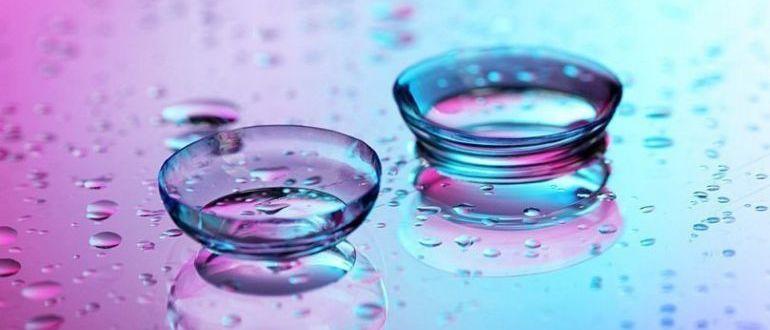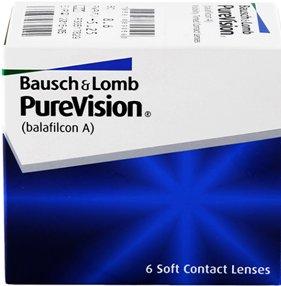At first glance, it may seem that all types of contact lenses are the same. Those people who are familiar with them in practice completely disagree with this. There are many brands on the market that produce varieties of lenses. It is not surprising that you can get confused when choosing. For beginners and experienced users, the question may arise: "What lenses are best for the eyes?"
By choosing the right contact lenses, you will be able to regain good vision. In this case, you will not experience discomfort. The surface itself will not fog up, even if you enter a warm room from the cold. They will not cause limitation of peripheral vision. With them, you can safely watch movies in the cinema in 3D mode, or combine them with wearing dark glasses on summer days. After reading the article to the end, you will understand exactly how to choose lenses for your eyes for the first time.
Content
- 1 TOP manufacturers on the market: which brand to give preference to
- 2 Contact lens design and basic principle of operation
- 3 Types of contact lenses
- 4 The main features of choosing contact lenses
- 5 Choosing the shape of contact lenses
- 6 The power of optics
- 7 Curvature diameter and radius
- 8 Color solution or transparency: which contact lenses to buy
- 9 Price question: how much do good contact lenses cost?
- 10 Expert advice: how to choose the right contact lenses
TOP manufacturers on the market: which brand to give preference to
There are many brands on the market today that are famous for their good reputation. They are all from different parts of the globe. There are worthy brands from China, Europe, United States of America, South Korea, Japan. It will not do without domestic manufacturers.
Each of the presented companies specializes in the production and sale of a wide variety of contact lenses. But still, brands from Europe and the USA enjoy great confidence among manufacturers. The products of these companies are one of the best today, which is confirmed by numerous reviews on the Web from buyers and specialists.
Today, the most popular brands are: Proclear, Acuvue, PureVision, Air Optix, Biofinity. Experts recommend giving preference to time-tested companies that guarantee the high quality of the goods presented. Do not be tempted to buy contact lenses from those brands that are not known and have a dubious reputation at a cheap price. First of all, it is about how healthy your eyes will be. Such savings may be unjustified, and will lead to disastrous consequences in the future. It is certainly not recommended to save on your health.
As for the question of how to choose contact lenses for the eyes for the first use, it is best to buy a couple of options at once. Due to this solution, you will be able to understand which model is more comfortable to wear. If you are interested in such a purchase, then do not neglect the information that goes in the article a little below.
Contact lens design and basic principle of operation
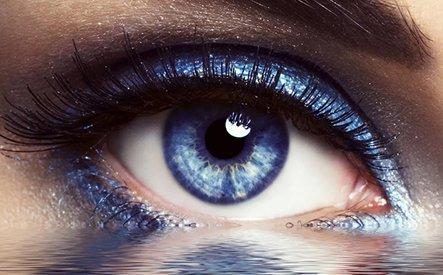
Before telling which contact lenses for the eyes are best to choose, it is recommended to understand what they are.These are thin and flexible plates that need to be applied to the eyeball area. The basic principle of operation is the same as for glasses equipped with diopters.
Today it is recognized that there is no universal lens option. Those. those models that might suit a number of people. You need to select them on an individual basis, guided by the advice of an ophthalmologist. Due to the presence of contact lenses, it is possible to correct myopia, hyperopia, as well as to solve the problems of astigmatism and presbyopia.
Remember that even if you have worn glasses in the past, it is worth choosing your lenses only after consulting a doctor. This is due to the fact that there is a significant difference between these items. The lenses will be worn in the eyeball area when the glasses are not in contact with them.
For this reason, the doctor, in addition to taking into account the state of visual acuity, takes into account a number of factors. This is the shape of the eyes, sensitivity, the time of wearing the lenses, leading a person to a certain lifestyle, having special habits and other aspects. Also, the ophthalmologist should tell you, not only how to choose lenses for your eyes yourself, but also explain how to care for them, wear them, put them on and take them off. He must issue an appointment that will allow him to subsequently make a purchase on his own, without resorting to his help.
Please note that experts advise against using contact lenses if you have an infectious disease. This happens most often during seasonal epidemics. If you have been infected, then be sure to discard the pair of lenses that were in use. This is due to the fact that pathogens may remain on its surface.
Types of contact lenses
There are different types of lenses on the market. All of them have both their advantages and disadvantages. To make it easier to make your choice in favor of the utility model, it is recommended that you familiarize yourself with the types in more detail below.
Hydrogel
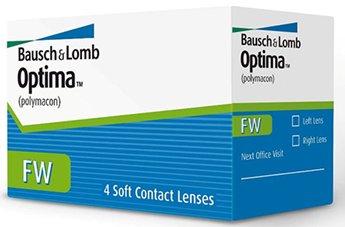
This is a soft lens option. They are produced through the use of special polymers that are best combined with mucosal tissues. The lens frame includes water that flows through special channels. Due to this, the process of saturation of the cornea with the required amount of oxygen occurs.
The oxygen permeability level is not high. It is allowed not to remove such hydrogel lenses for a long time. They fit comfortably on the eye, and the fact that they have a rich liquid content makes them easy to handle.
Benefits
- there is no discomfort when worn;
- no time is needed to get used to the lenses;
- the purchase is simple, the selection will not cause problems.
disadvantages
- may tear;
- do not provide the cornea with the proper dose of oxygen.
Gas permeable
This is a hard lens. Manufacturers make them based on silicone. Today it is a popular type that is not much inferior to soft contact lenses.
The material contributes to excellent oxygen permeability. At the same time, rigid versions have a smaller diameter. It turns out that the extreme peripheral zone of the cornea will be free for tears, which washes away various foreign particles.
It is difficult to do without such lenses in the case of severe astigmatism. Also, a gas-permeable view will be useful for keratoconus, age-related hyperopia, and refractive errors.
Benefits
- ability to keep in shape;
- will not break;
- high properties of resistance to protein deposits;
- do not dry in summer and with winds;
- the service life is decent.
disadvantages
- time for adaptation is important;
- able to change the shape of the cornea;
- difficult selection.
Silicone hydrogel
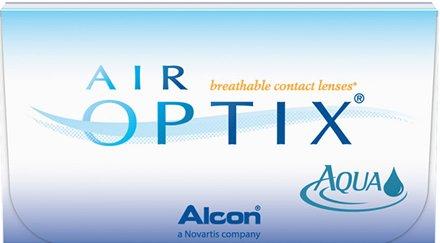
Silicone hydrogel lenses can provide oxygen permeability, but this is not only due to the use of water. The plates are based on a hydrogel, which combines the structure of the lens and eye tissues, as well as silicone, which provides the cornea with the ability to "breathe".
Due to the silicone, it is possible to ensure the transmission of oxygen. The occurrence of hypoxia or other abnormalities in the contact lens data carrier is excluded.Together with this fact, the hydrogel helps to moisturize tissues, which reduces discomfort and dryness to a minimum. This type of contact lenses is considered the most popular and safest to use.
Benefits
- resistance to lipid and protein deposits;
- lack of liquid evaporation;
- the possibility of long-term wearing of lenses;
- ease of putting on and taking off.
disadvantages
- there may be cases of need for addiction.
The main features of choosing contact lenses
Lens wearing mode

All types of contact lenses have a maximum life that allows them to be worn without having to change. In total, 4 modes are known: daytime, flexible, prolonged and continuous.
In the first case, they put on lenses in the morning, but before going to bed, you should definitely take them off. In the case of the flexible mode, the lenses can be left on for 2-3 days, including at night. But with prolonged wear, the wear is carried out for a week.
As for the continuous, it still has limitations. But they boil down to the fact that the lenses should be removed after 30 days.
Having studied all the modes in more detail, we can conclude that the day mode is the best option. It is distinguished by its gentle properties. Suitable for those who have sensitive eyes. If you travel frequently, then you better use flexible mode. In the absence of comfortable conditions, it is irreplaceable.
But the rest of the longer modes can be applied if necessary. These lenses accumulate lipids and protein, which can irritate the mucous membranes. Certainly no one wants to deal with such phenomena on personal experience.
If the eyes calmly endure one of the long-term regimes, this is not a reason to resort to them always. Is it really difficult for you to take off your lenses in the evening before going to bed, and put on fresh ones in the morning so as not to harm your eye health ?!
Replacement Importance: Frequency Index
Today contact lenses are divided based on the parameter of necessity. These are one-day, one-2-week, monthly, 3-month, 6-month and annual.
Each of the options is indicated on the packaging. The shelf life will be maximum. It is not recommended to violate the instructions. Otherwise, it's easy to run into problems. If there is no urgent need, then do not take lenses that have a period of more than 3 months. But, of course, you always need to set your parameters based on personal preferences.
Moisture content and oxygen permeability coefficients
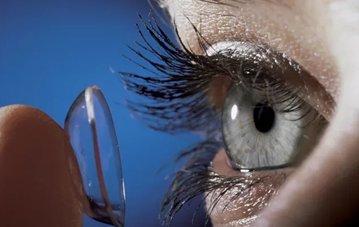
Dry eye syndrome is often known to those who use contact lenses. Indeed, during the day, and often in the late afternoon, people note that a burning sensation appears in the eyes, which provokes an uncomfortable sensation.
Of course, there are a number of special moisturizing drops, which, according to reviews, if they help, it will be only temporary. To prevent such a problem from arising, it is necessary first of all to draw attention to the presence of water in them.
Today 3 categories are known: low hydrophilic (up to 50 percent); with an average content (50 percent); highly hydrophilic (more than 50 percent). It is important not to forget about one more important parameter. This is the oxygen permeability (Dk / t). It is best to choose 46% and Dk / t 150. those parameters where there will be a lower or average water content, but a higher indicator of the value of oxygen transmission to the cornea.
Choosing the shape of contact lenses
Today there are 4 types of lenses. They are spherical, aspherical, toric and multifocal.
Let's deal with each of them in more detail. By toric one should mean lenses that are simultaneously capable of correcting the problems of farsightedness and myopia. But the spherical one is a simple shape with a round device.
Speaking of mutiltifocal lenses, it should be noted that due to the presence of 3 zones, they will provide clear vision at different distances. But the aspherical one is presented in the form of an ellipse. Even if the diopters are very high, there will be no distortion, which cannot be said about the round shape.Also, aspherical lenses have a large viewing radius. They are lightweight, flat and thin.
The power of optics
You should not shop for those lenses in which you look at the world with the "perfect eye", in particular, if you work on a PC, ie. at short distances. When the lens is on the eyeball, you will see better than when wearing glasses, and the power of the optics will remain the same in terms of performance.
It is better to select the exact parameters, relying on the available vision. If you urgently need to buy lenses, but those that suit you are not available, then it is better to pay attention to options with a lower optical power, its limits will be 1-2.
Curvature diameter and radius
The optometrist will personally set these parameters. But there are also standard solutions that will suit many. For example, the diameter will be 14-14.2 with a radius of curvature of 8.4-8.6. In case of urgent need to buy lenses, ask for help from a consultant who represents the interests of the optics store.
Rely on size. This is an important parameter for fit and comfort to wear. With a curvature that matches the cornea, it will be possible to achieve a perfect fit on the eyeball. But if discomfort is observed, these parameters are most often to blame.
Color solution or transparency: which contact lenses to buy
Speaking of clear lenses, it is worth noting that they are the most popular with users. There is a really great demand for them. Colored lenses differ in that they are colored, except for the pupil area, and therefore will help to change your image.
Today, manufacturers have gone further and offered patterned options. Such lenses provide for the color of some part of the pattern. But in the case of tinted ones, the lens will be visible on any surface really well.
With translucent contact lenses, you can emphasize the natural color of the eyes, enhance it. But wearing such lenses is not worth long.
Price question: how much do good contact lenses cost?
The price differentiation in the market is great. If you need to buy one-day lenses, then they will cost around 1,000 rubles. But for a flexible schedule, you can buy it for 1500-2000 rubles.
Prolonged lenses cost around 1200-3000 rubles, and 4000-7000 rubles for continuous wear.
If you are interested in buying colored contact lenses, then be prepared to spend in the region of 500-2,000 rubles.
Expert advice: how to choose the right contact lenses
First of all, we note that rigid lenses have excellent oxygen permeability indicators, but they need the eyes to get used to them. Suitable for wear with severe astigmatism.
Hydrogel lenses are soft, but they are not very comfortable to wear, and they are likely to cause dryness. Silicone hydrogels are recommended for purchase, since they are devoid of such disadvantages.

